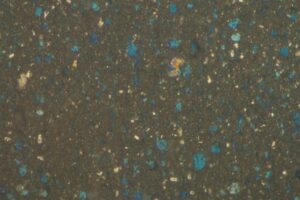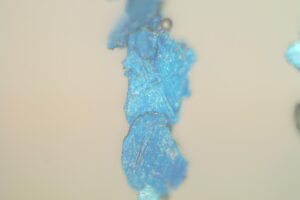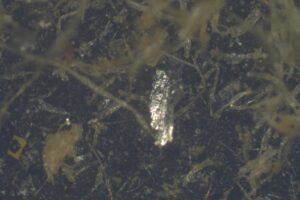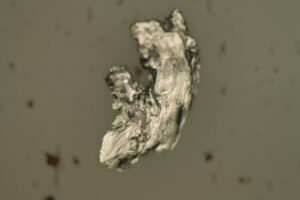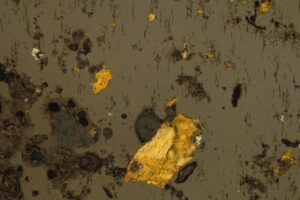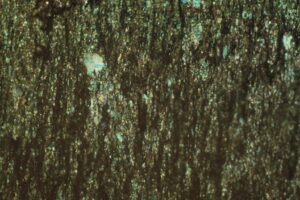Analytical Ferrography
Overview
Ferrography provides a detailed “forensic science” analysis of the wear particles, contaminants and lubrication degradation, by interpreting the debris on a ferrography slide. By analyzing the color, morphology, size, and surface detail of ferrous and nonferrous wear particles, an experienced analyst can provide accurate information about the type, severity and root cause of normal and abnormal wear.
A Fluid Life senior analyst provides a detailed report identifying the type, nature and probable source of the wear particles and contaminants, along with relevant photographs of the ferrogram. This data enables maintenance experts to implement predictive and effective actions base on the importance of this information.
Benefits
When implemented correctly analytical ferrography can provide:
- A powerful diagnostic tool for your maintenance program
- A progressive extension to your conventional sampling program
- Excellent return on your oil analysis investment
If the effort is taken to fully understand what analytical ferrography reveals, the benefits significantly outweigh the costs. Maintenance professionals are wise to automatically incorporate analytical ferrography to identify abnormal wear before it leads to failure.
How it Works
During the creation of a ferrogram, ferrous particles will deposit on the slide according to the particle size. Non-ferrous particles and contaminants will also deposit onto the slide.
Particle identification
Normal Rubbing/Sliding Wear
- <15 microns in size
- Little or no visible texture to particles
- Due to normal rubbing/sliding of metal surfaces against each other
Cutting Wear
- Long curved or corkscrew like particles
- May be due to one surface contacting another (two body wear), or an embedded particle in one surface contacting another (three body wear)
- May also be an indication of misalignment
- Presence is always abnormal
Adhesive Wear
- Particles are ‘three-dimensional’ in shape (not flat)
- Generated when two metal surfaces contact each other under a compressive load and experience plastic deformation (surfaces are temporarily welded together, and material from one surface is transferred from the first surface to the second surface).
- Includes sliding wear
Severe Sliding Wear
- >15 microns in size
- Large particles showing parallel striations along the surface
- Generated due to excessive loads and/or speeds on a sliding surface
- Presence is always abnormal
Laminar Wear
- Particles >50 microns in size, with smooth flat surfaces
- Particles are 5-50 times longer than wide
- Result of fatigue wear generated in rolling element bearings (micro-spalling) that has been flattened in the rolling contact zone
Spheres
- Large diameter and small diameter
- Symptom of fatigue or outside contamination
- May also indicate static electrical discharges or the melting of babbitt bearing surfaces due to friction
- Spheres <5 microns in size may be wear particles associated with rolling element bearings • Spheres >5 microns in size are likely due to cavitation or contamination (grinding, welding, sandblasting or flash)
Fibers/Cellulose
- Appear as long, tubular white/gray particles
- Two sources:
- External contamination (Rags, shop cloths, coveralls) or
- Internal component generation (Filter material, Clutch plates)
- May be an indication of clutch plate wear or filter failure
Dirt/Dust/Sand
- Particles are typically opaque or mottled in appearance
- Result of airborne contamination ingested by equipment due to faulty seals, breathers, or poor maintenance practices
- May also be due to contaminated new oil (unclean barrels/tanks, transfer containers)
Red Oxides (Rust)
- Orange or brown colored particles
- Generated from rust, or as a result of corrosion/oxidation of iron parts
- Most likely cause is water contamination
Dark Metallo-Oxides
- Dark grey or black particles
- Indication of high operating temperatures due to insufficient lubrication
Copper/Copper Alloy
- Yellowish/gold particles
- Indicate that copper/copper alloy (brass/bronze) components are wearing
Organic Debris
- Can appear as dark streaks (like slime) caused by oxidation by-products (sludge, etc.)
- Can appear as small black particles (carbon) caused by combustion by-products (soot) or solid lubricants (graphite, teflon)
Maintenance Solutions
Knowing the nature of abnormal wear or contamination in a lubricant, the maintenance technician can take a course of action, such as:
• Adjusting or optimizing oil change intervals
• Deploying an advanced filtration system

